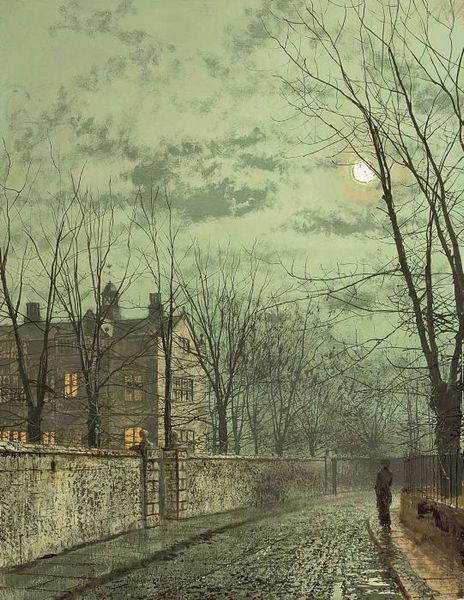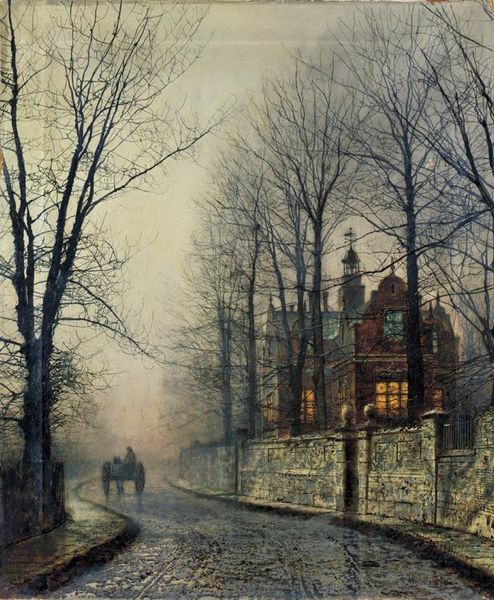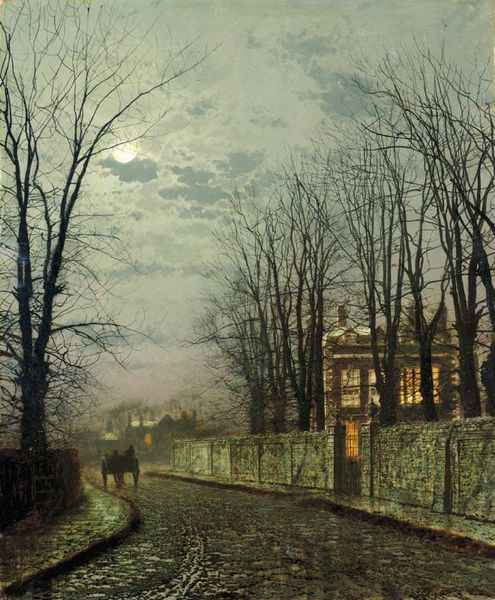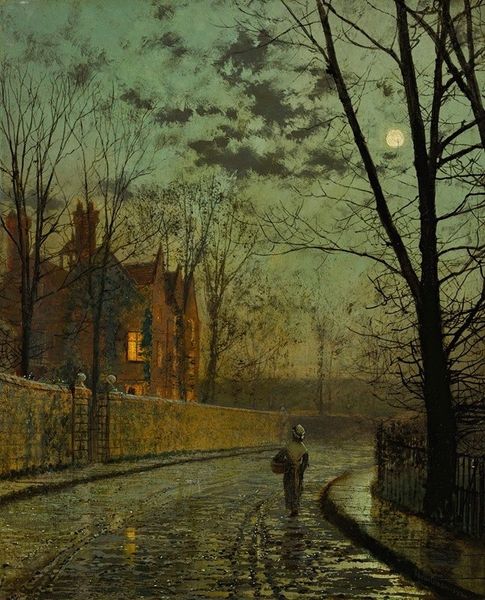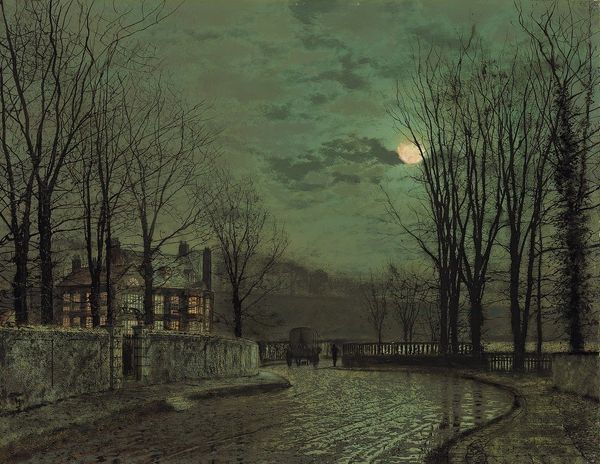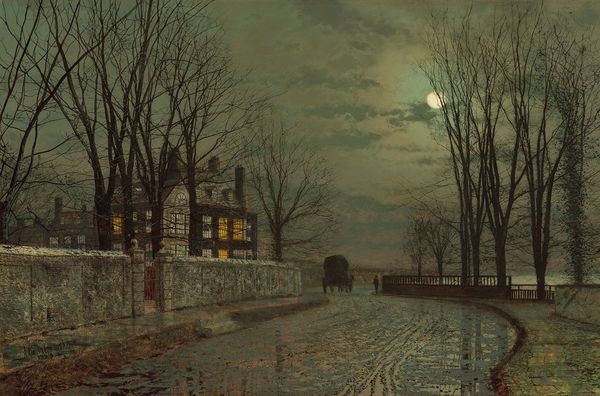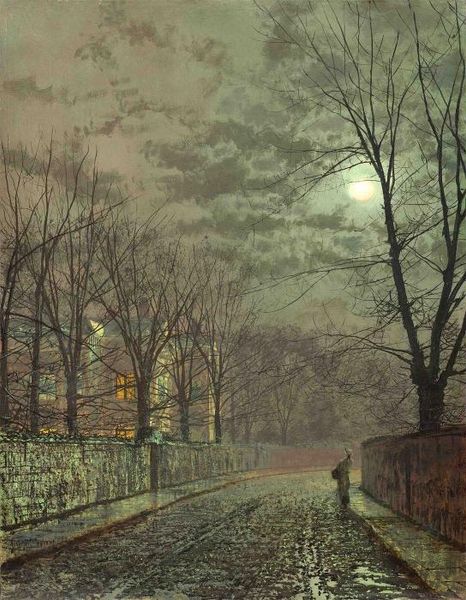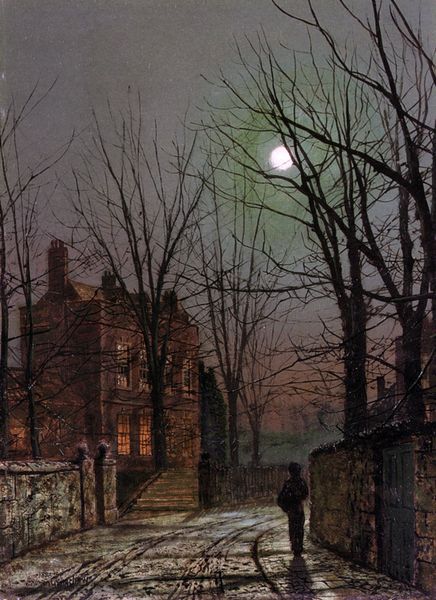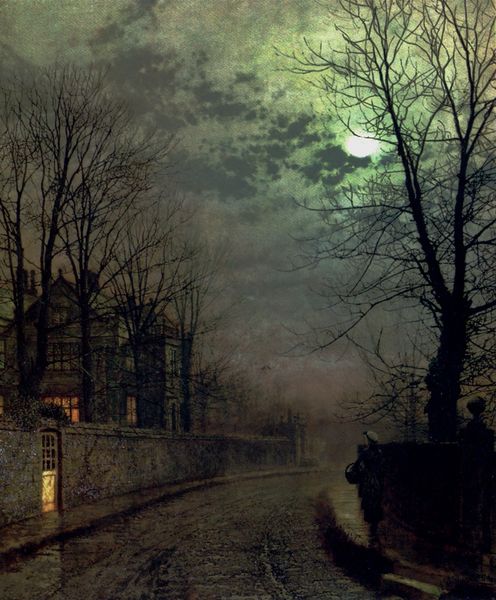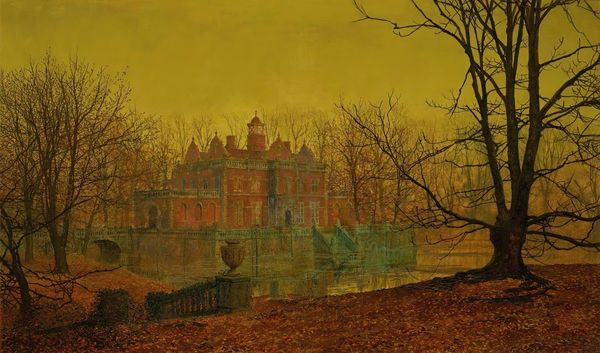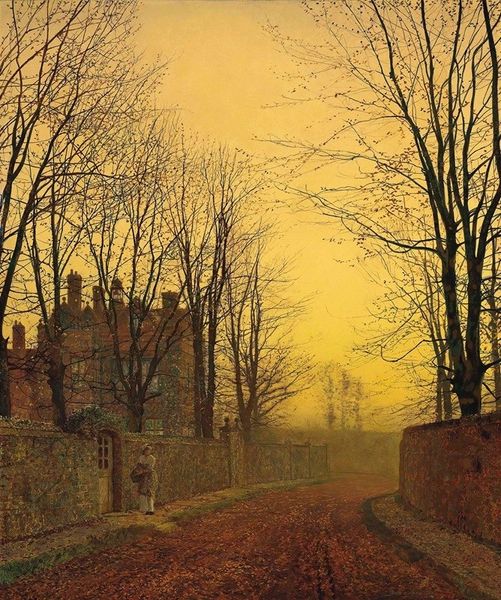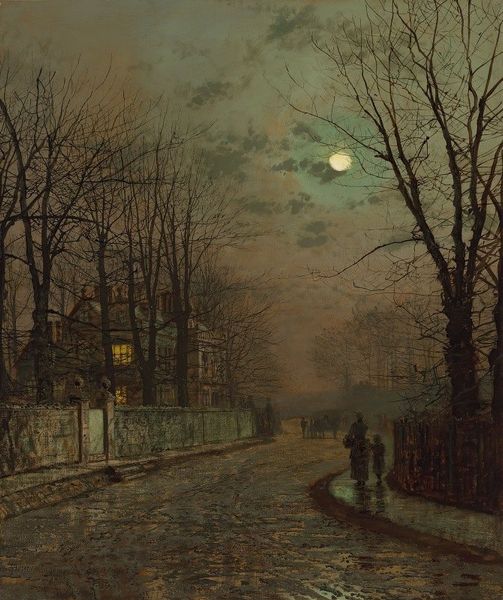
painting
#
night
#
tree
#
boat
#
urban landscape
#
abandoned
#
ship
#
painting
#
atmospheric-phenomenon
#
impressionism
#
landscape
#
urban cityscape
#
derelict
#
city scape
#
intimism
#
romanticism
#
fog
#
men
#
water
#
cityscape
#
genre-painting
#
watercolor
#
ruin
Copyright: Public domain
Curator: Ah, yes, here we have "Under the Moonbeams" by John Atkinson Grimshaw. There's no precise date for it, but it clearly showcases his atmospheric night scenes. Editor: Wow, the fog just rolls right off the canvas, doesn’t it? It feels almost like stepping into a half-remembered dream, a place just beyond the edge of consciousness. Bit spooky, if I’m honest! Curator: Spooky, perhaps. Grimshaw's work was often about more than just pretty pictures, he was invested in Victorian notions of romanticism and its themes of darkness, life, death, social commentary. These nocturnes offered him the space to discuss complex themes for his day. Editor: Those warm window lights blazing in the distance feel deliberately artificial—they juxtapose really nicely against that muted and organic palette to set a strong uncanny feeling. It feels… staged, somehow. Deliberately put there, which creates a kind of theatrical feel—an artifice, even, as the lights lead the viewer deeper into the mist… Curator: Absolutely. You can really consider the urban landscape he captures and how his urban landscapes spoke to rapid industrialization, urbanization and societal change that defined much of 19th Century England. In addition, Grimshaw has carefully captured what is more likely than not to be polluted fog from coal. These are romantic, yes, but that does not ignore the social commentary taking place about pollution in major population hubs at the time. Editor: Mmhmm. I love how he's contrasted the human and nature. Like the water in the immediate foreground and the men are natural, the scene moves backwards to an artificial structure that glows under moonlight. But nature eventually overwhelms what men produce because, one day, these buildings will disappear as if in mist as well... Curator: Precisely. Grimshaw’s success in creating compelling depictions of light and shadow appealed to industrial patrons in northern England seeking status and an escape from modern pressures. They were able to afford him, and as such the works were often displayed in their large manor homes. Editor: So, we’re talking about atmospheric escapism for an industrial audience who created those very conditions. It is darkly ironic. Well, that’s given me more than enough to mull over during tea. Fascinating! Curator: Indeed! I think you have summarized both artistic impact and complex meanings so succinctly. Let’s move on to our next exhibit.
Comments
No comments
Be the first to comment and join the conversation on the ultimate creative platform.
